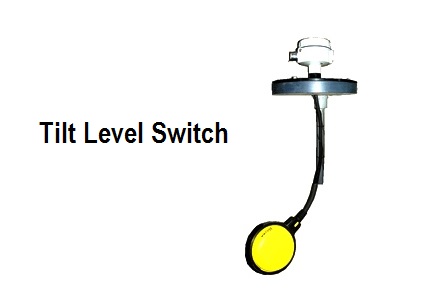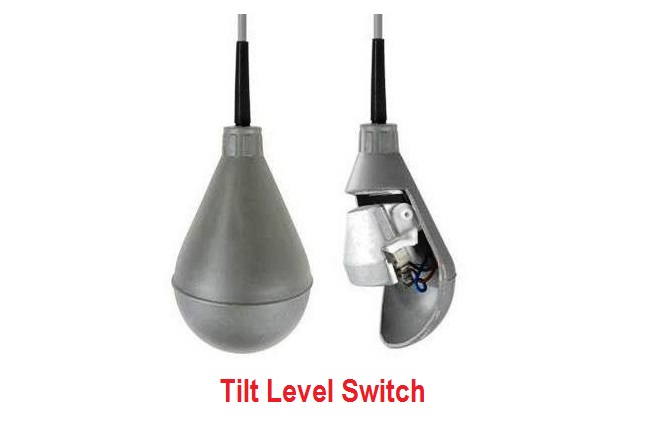Tilt Level Switch is commonly used at the end of a conveyor system. Where product is dropping off the conveyor and into a pile, the pile height can be governed by the tilt level switch.

The switch is a vertical device that hangs at a level that the conveyor should be shut off at. When the pile pushes the tilt switch 5 degrees out of plumb a mercury switch inside the tilt switch operates and shuts off the motor to the conveyor.
Tilt level switches are economical, trouble-free point level controls available for detection of dry bulk materials. The units can be used as high level indicators to eliminate bin overflow or to control levels in open piles.
In addition, the tilt level switches are useful in determining over or under-load on conveyor belts. The simple yet efficient internal construction provides indication when unit is tilted at a 17° angle throughout the complete 360° of axial arc.
Each tilt level switch includes a threaded bore for attaching extension Actuators which can increase sensing repeatability and protect the tilt level switch from direct contact with coarse material.
Principle of Operation

A tilt level switch provides indication by detecting the angular position of the tilt switch enclosure.
Typically the unit is suspended above the material to be sensed. Internally, a steel ball centers itself over a switch resulting in switch actuation.
As rising material contacts the tilt switch the enclosure begins to tilt. When the enclosure body is tilted at 17°, the steel ball rolls off center, deactivating the switch.
As material falls away from the switch enclosure body and the unit becomes upright, the ball returns to its original centered position, once again causing switch actuation.
The change in the internal switch status is user accessible for signaling alarms, lights, or interfacing with a PLC.